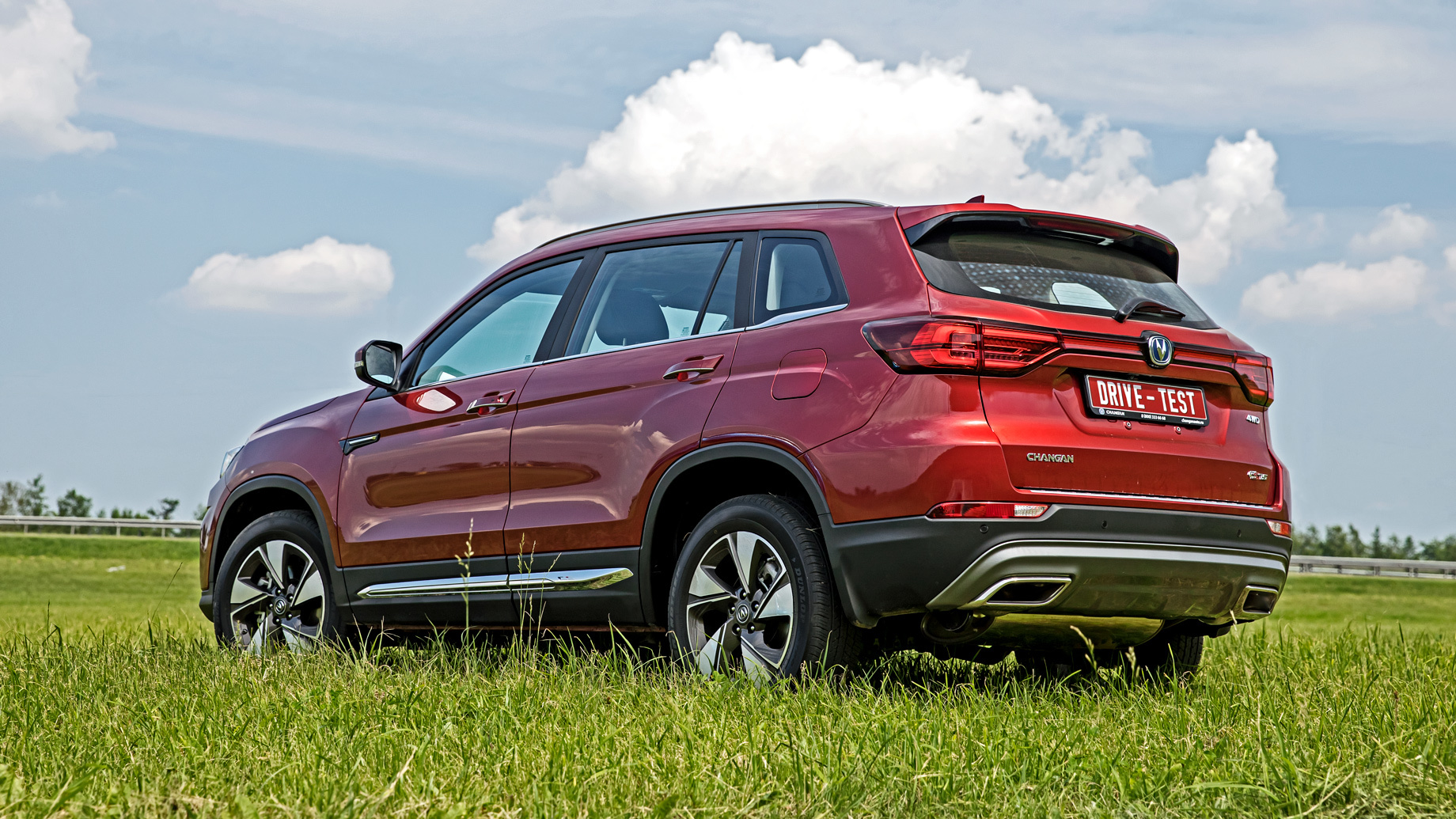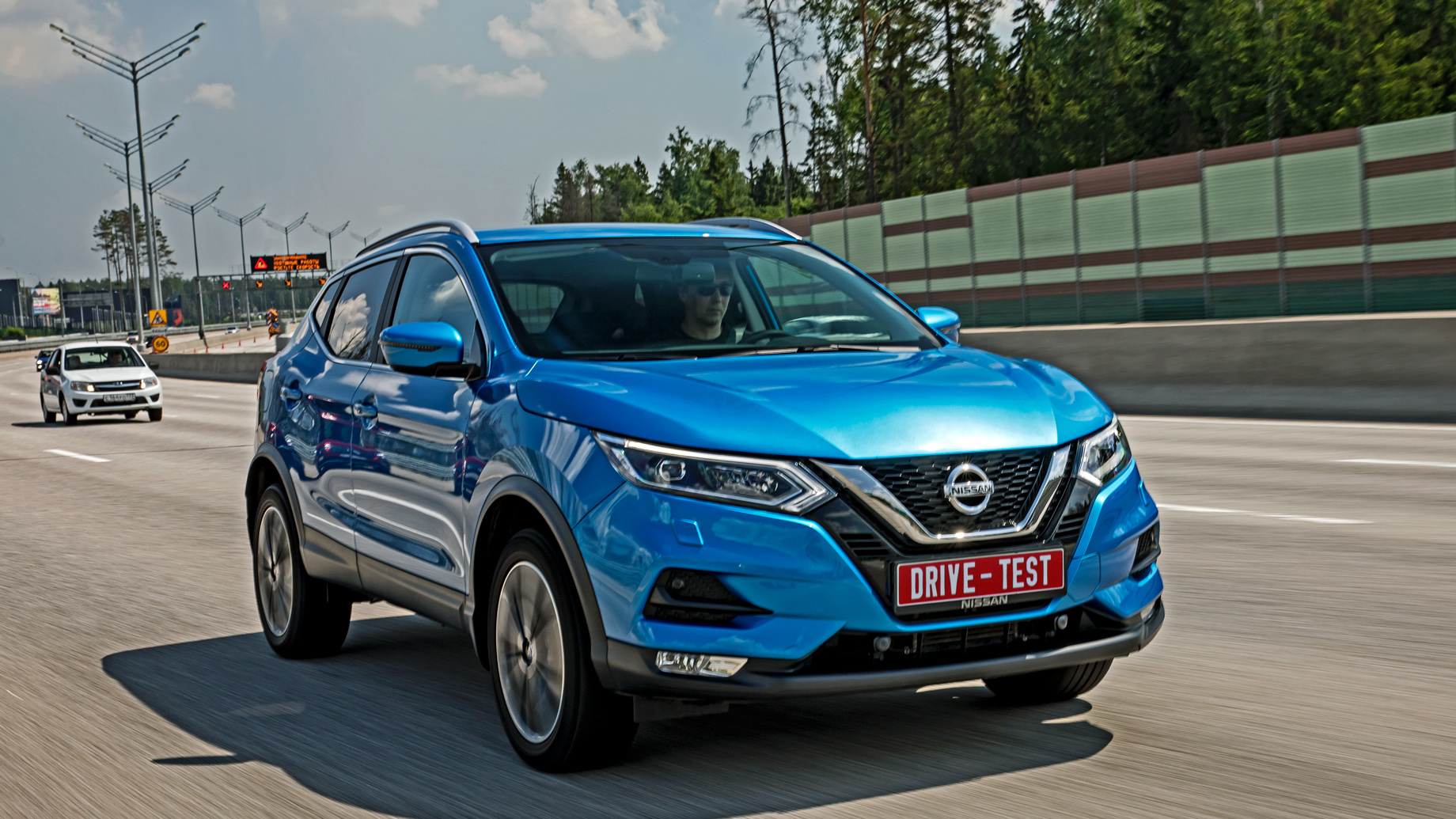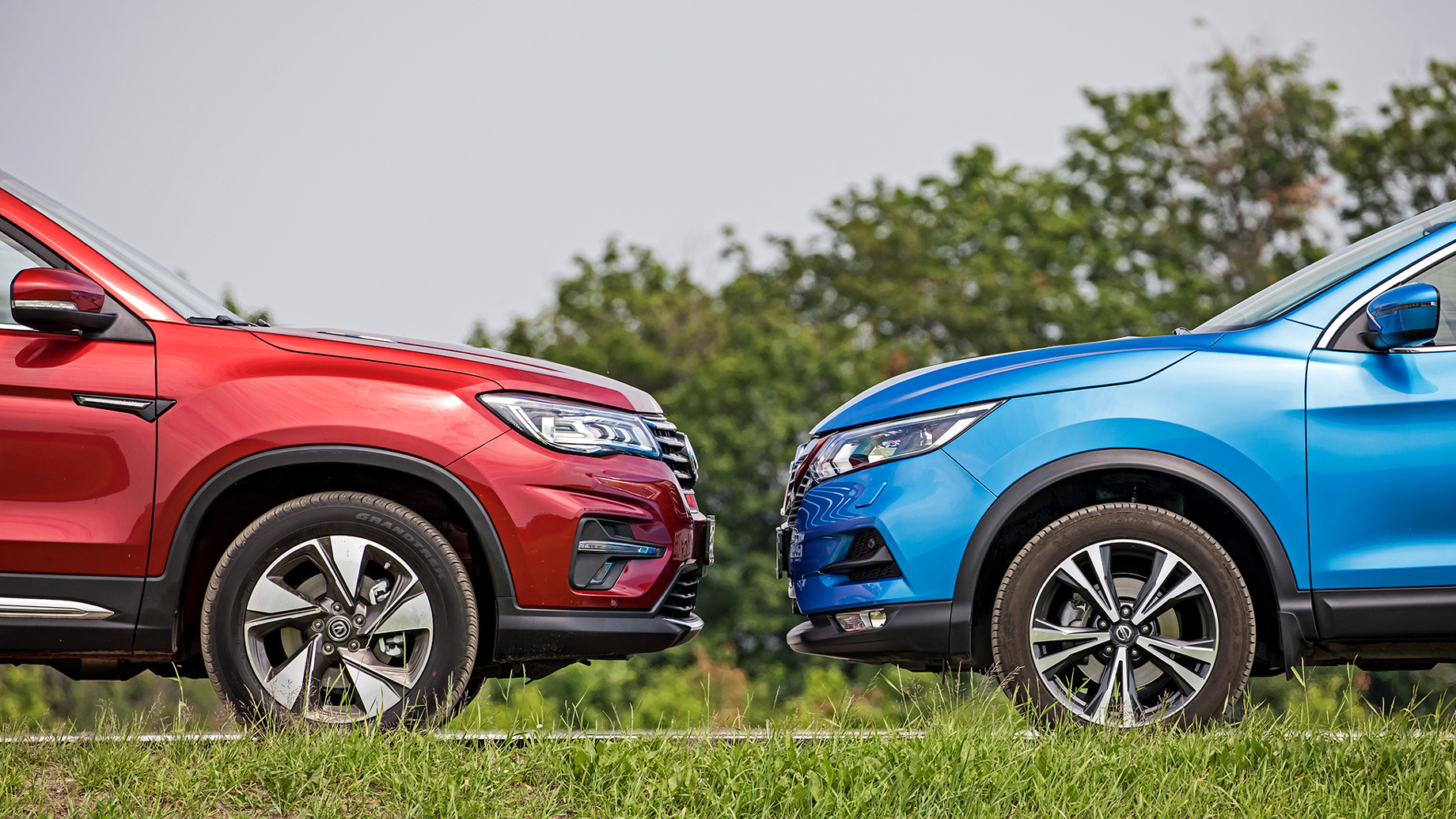Speaking of the Changan CS75, we mean an updated crossover with the FL index. This clarification is necessary because the usual 75 is sold in parallel and has a different cost. The FL with a corrected appearance, a repainted interior and a 150-horsepower turbo-engine costs more than its counterpart. Not to mention the option with all-wheel drive. For this money, you can buy a “Korean” or, for example, the updated two-liter Qashqai 4WD with a variator. The Nissan is slightly weaker, but, according to factory data, lighter, more economical and dynamic. And what is in fact?
The Changan, profusely chrome-plated and gleaming in the sun, may seem like a prestigious thing. But on closer inspection, I noticed the enamel peeling off the logos and the unpainted inner edges of the front splashers, clearly visible when the doors are open. They were also noticed in the younger CS55, which we tested earlier. Otherwise, the build quality of the crossover supplied from China is not bad. Bumpers and other plastic are joined tightly, the gaps are uniform.

The localized Qashqai is assembled with more noticeable flaws. The fit of parts is not so accurate, and the mounting “giblets” are visible through the enlarged gaps. The heavy hood without gas struts is connected to splashers and headlights with such clearance that you involuntarily doubt whether it is locked. Access to the engine compartment of the CS75 FL doesn’t require much effort, thanks to shock absorbers.
The Chinese interior is full of different-grade plastic and leatherette, but it is assembled flawlessly and firmly: not a single creak in motion. It also doesn’t bother with toxic odors, although the thermometer showed over 86°F (30°C) during the test. Drinks in a refrigerated box between the front seats make the trip even more enjoyable… However, the Changan is stingy on warm options. Even in the top version, there is no heated steering wheel, heated windshield or rear seat.
Or, for example, the dashboard. A seven-inch display with modern graphics is able to make a strong impression. But the functionality is poor: in addition to a digital speedometer and a simple visualization of thrust distribution along the axes, it doesn’t show anything worthwhile. Even the fuel distance is not displayed. The squiggles of the main scales with a different font are not readable in motion at all.
The range of the steering column reach adjustment is scanty, as if for show. The driver’s seat cushion is soft and short. There is no lumbar support adjustment. But there is an electric drive and even a unique for this class memory function. The Chinese don’t spare leatherette even for basic equipment. Of course, it adds a premium gloss to the cabin of the 75, but without perforation creates the effect of a compress.

The Qashqai monochrome interior doesn’t please the eye, but it doesn’t irritate either. Unless plafonds from the Logan are upsetting. The build quality is decent, the trim materials are mostly soft, like in the older X-Trail. During our drive, I especially liked the malleable left armrest. Every single button around the driver is illuminated, the power window drive is fully automated. The Changan doesn’t save on light bulbs either, even forking out for background lighting, but only the front windows open with one touch.
Our Qashqai in the middle QE Yandex configuration has a fabric trim. And this is great! Textiles are more clingy than eco-leather, perfectly hold a body even in sharp turns and reject heat well. The fit itself is also more convenient than that of the competitor, due to the optimal shape of the seat and the normal reach of the steering column. The lumbar support can be adjusted by both the driver and the front passenger.

Passengers are not cramped on the second row of the “Japanese”: there is a sufficient amount of space in the knees and above the head. However, the larger “Chinese” is much more spacious. Even the one who sits in the Changan in the middle will be comfortable in the absence of a floor tunnel. And you can also recline the back. At the same time, the seat cushion slightly leans down and forward, providing passengers with a more relaxed pose. Good point!
Subjectively, the Chinese turbocharged 4-cylinder 1.8 engine develops not 150 hp, but about twenty more forces. At home, the BlueCore family engine produces 163 hp. It is especially good at medium speeds, where all 245 N-m are available. Fast overtaking is the Changan’s specialty. At the same time, the driver perfectly controls acceleration, thanks to the almost linear response to actions with the accelerator. It’s a pity that it gets noisy in the cabin at high loads, although, in general, the CS75 FL is still quieter than the Qashqai. Mostly because of the less intrusive hum of tires.
The Aisin six-speed automatic gearbox supports slight movements of the gas pedal by urgently lowering the gear. But if you need to shift a few gears down at once, it hangs up for a couple of seconds. However, even with a kickdown, the operation of the gearbox is smooth. It is also barely noticeable with regular strumming of transmission chords.
The Qashqai is lagging behind, despite a better passport acceleration time. Partly due to the fault of the ancient naturally aspirated 2.0 (144 forces) engine, as if reluctantly gaining momentum. Partly because of the Jatco variator. Frequent upgrades haven’t created a strong pedal connection at intense accelerations. The gearbox also howls under the load, as if complaining about fate. But in a city, where the amplitudes of accelerator movement rarely exceed half the stroke, it suddenly turns into a goody-goody. The responses are linear, the engine balances in the middle range. Driving on the streets of the metropolis, I almost forgot that the Nissan has no Sport mode.

The Qashqai doesn’t approve of energetic pilotage at all. It reacts without enthusiasm to turns of overloaded and uninformative steering wheel. It doesn’t steer with a multi-link on the arc: the rear axle passively drags behind the front. However, the rolls are small. And the limiting capabilities of the chassis are quite high, as you can see if you push through the Nissan detachment with lateral overloads. And yet the driven wheels are the first to lose grip.
The Changan begins to plow its face even before the Nissan. But it provides better trajectory control in pre-limit modes. Mainly due to the transparent steering with good feedback. The range of suspension capabilities of the “Chinese” is also wider. A minor defect appears only in the slaps of tires, and an acceptable level of comfort is maintained even on heavily broken roads. The reserve of power consumption is greater than that of the Qashqai. It perfectly smoothes the urban trifle, but it does great until you meet medium-sized potholes. On large irregularities, shock absorbers become stiff and sound the pits with fat shocks.
Light off-road is also not in favor of the Qashqai. During the wheels axling, its electronic systems respond with delays, allowing useless rotation. And in cases when slipping is necessary (for example, in mud), the variator doesn’t have enough rigidity to load the wheels with torque. The Chinese crossover’s imitation of locks works more delicately and with fewer pauses. In places where the Nissan demands to lock the rear-wheel drive clutch, the Changan confidently moves in standard Auto mode.

It turns out that the CS75 FL is ahead of the Qashqai in most disciplines. The Changan is more dynamic, more comfortable, more capable off the roads. The passengers of the second row will also add their two cents in favor of the “Chinese”. Yes, the lack of warm options and prices, which have grown, are confusing. But equipped to the level of the Changan, the two-liter four-wheel drive Nissan in the rich LE configuration is even more expensive. But sales of such seemingly imperfect and overpriced Qashqais are still better. Is it fair? I am distracted from thinking about the biased attitude towards Chinese cars by a loud impact from somewhere under the bottom of the Changan.
This is a translation. You can read the original here: https://www.drive.ru/test-drive/changan/nissan/5efc98e6ec05c4ea6d000024.html

Published November 10, 2022 • 6m to read






